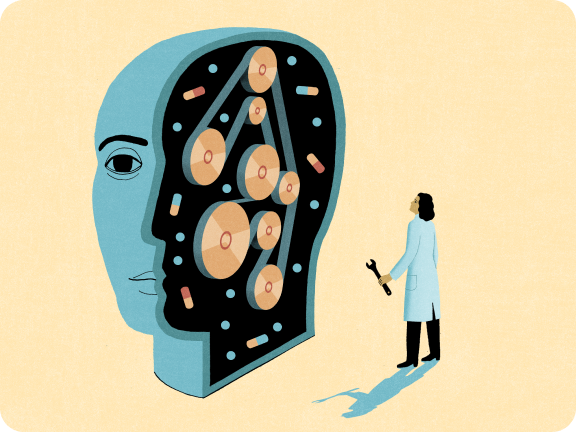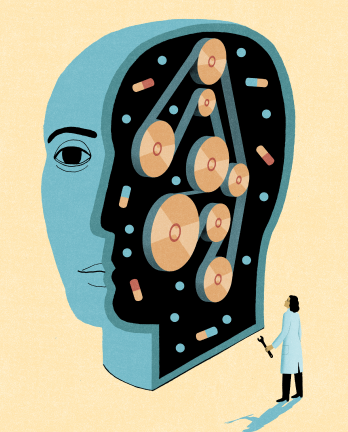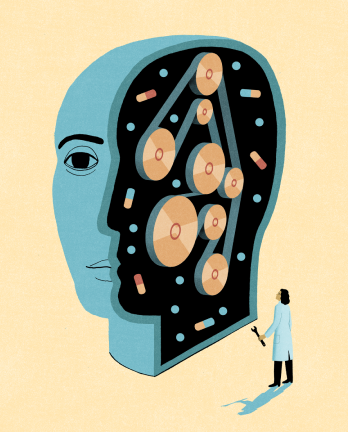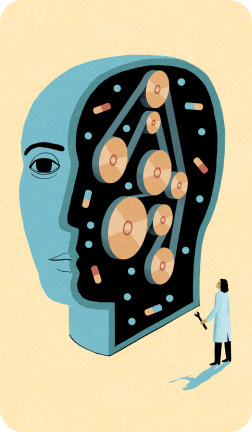Partner Content
This content was paid for by Jefferson Enterprise and created by INQStudio. The news and editorial staffs of The Inquirer had no role in this article’s creation.
This content was paid for by Jefferson Enterprise and created by INQStudio. The news and editorial staffs of The Inquirer had no role in this article’s creation.
The standard American diet fuels sickness, depression, and impulsive behavior. How to get the nutrition we need instead.
The standard American diet fuels sickness, depression, and impulsive behavior. How to get the nutrition we need instead.
The standard American diet fuels sickness, depression, and impulsive behavior. How to get the nutrition we need instead.
The standard American diet fuels sickness, depression, and impulsive behavior. How to get the nutrition we need instead.
ood affects our mood. A healthy diet, as defined by the World Health Organization, primarily consists of nutrient-dense foods such as fruits, vegetables, legumes, nuts, lean proteins, and whole grains. It delivers the cancer-fighting antioxidants, energy-sustaining complex carbs, heart-healthy omega-3 fatty acids, life-supporting vitamins, and essential nutrients we need daily. And it prioritizes a limited intake of health-degrading added sugar, sodium, and saturated and trans fats.
But many Americans prioritize convenience over health and consume a high level of the ultraprocessed foods—those significantly modified from their natural form and containing unhealthy levels of added sugar, salt, fat, and preservatives—that now make up the standard American diet (SAD). This diet starves us of vital nutrients, and studies link it to behavior and mental health challenges such as depression and impulsivity.
In their book, “Brain Weaver,” Andrew Newberg and Daniel Monti, who study the intersection of nutrition and brain health at Thomas Jefferson University, explain the importance of proper nutrition for the brain. The wrong foods, they write, can wreak havoc on brain structure and function, resulting in undesirable changes in our behavior.
Processed foods cause blood sugar to spike and then plummet, tricking our brains into believing we are in danger. And those of us who eat the most processed food—nine servings per day—are also 50% more likely to develop depression than those of us who eat the least processed foods, or four servings a day or less.
Nutrient-dense food is essential for peak cognitive function.

Many historically redlined neighborhoods, which segregated working-class communities of color into specific urban areas, now face food insecurity or challenges with food access.”
MARILISA NAVARRO, PH.D., assistant professor of African American studies at Thomas Jefferson University and expert in food justice issues
The Gut/Brain Connection
The food we eat influences the type of bacteria in our digestive system, which has a chemical pathway to the brain. There are good bacteria and bad bacteria, and the presence of bad bacteria can be the result of too much of the saturated fat, dairy, and simple carbohydrates found in ultraprocessed foods. Diets high in these foods cause inflammation that affects the ability of the nervous system’s neurons to work properly and can lead to heightened levels of anxiety and a propensity to overreact, says Newberg.
Conversely, diets rich in omega-3 fatty acids—healthy fats we obtain from sources such as fatty fish, seeds, nuts, and plant oils—have been shown to support brain function and neuroplasticity. The result is better cognition, increased memory and attention, and enhanced impulse control. DHA, an omega-3 fatty acid found in fish oil, has even been shown to help brain cells regrow.
When our bodies are fed a diet of nutrient-deficient food, the gut reacts as if a threat is imminent. The amygdala, the alarm center of the brain, fires up and activates the fight-or-flight response. Here are some other effects of a low-nutrient diet on the brain:
Real-Life Consequences
Many of us can personally relate to the effects that eating certain foods has on our brains and behavior.
“When we experience low blood sugar, that is the biggest problem,” says Newberg, who is also director of research at the Marcus Institute for Integrated Health at Thomas Jefferson University.
“The frontal cortex takes a lot of energy,” Newberg explains, referring to the part of our brain responsible for important functions such as decision-making and managing our emotions. When blood sugar is too low, there is not enough energy available for the brain. “When you are low energy, you have less ability to control impulsivity. So when someone cuts you off on the freeway, your limbic system goes into overdrive, you get angry, and you snap.”
The source of our blood sugar makes a difference in how it affects us. Eating complex carbohydrates like those that naturally occur in whole grains and other nutrient-dense foods helps maintain steady blood sugar levels, providing a consistent supply of energy to our brain’s frontal cortex.

When you are low energy, you have less ability to control impulsivity. So when someone cuts you off on the freeway, your limbic system goes into overdrive, you get angry, and you snap.”
Andrew Newberg, Ph.D., director of research at the Marcus Institute of Integrative Health, Thomas Jefferson University
By contrast, starting the day with foods that contain refined carbohydrates and added sugar causes a sudden spike in blood sugar. Insulin rushes in to normalize blood sugar levels, and the resulting drop causes a sudden energy deficit in our brains. This makes us feel lethargic, foggy, irritable, and newly hungry. If we reach for foods that have the same effect, this vicious cycle repeats, affecting our brains, how we think, and how we act.
In one study, participants were asked to stick pins in a doll that represented their spouse and to compete against their spouse on a task, after which the winner blasted the loser with loud noise. The results showed that the lower the blood sugar levels over 21 days, the more aggression the individuals showed (by blasting their spouse with loud noise) and the more anger they reported toward their spouse, represented by the number of pins they stuck in the dolls.
Nutrition plays a particularly critical role in the development of young brains, both during pregnancy and in early childhood. Deficiencies in protein, micronutrients such as zinc and iron, and omega-3 fatty acids can hinder brain functioning and eventually lead to behavior disorders. A 2004 study showed that boys born to mothers who were malnourished during the first and second trimesters of pregnancy had 2.5 times the normal rate of antisocial personality disorder once they reached adulthood. A lack of protein, zinc, iron, and vitamin B among three-year-olds resulted in greater antisocial, aggressive, and hyperactive behaviors by the time these children reached the ages of 8, 11, and 17, another study found.
Racial and class disparities in food access add an inequity dimension to these issues. “In school, many teachers and administrators assume that children of color are unmotivated because they may not perform or behave in a way that is aligned with their expectation of how a ‘good’ student should behave,” explains Marilisa Navarro, Ph.D., assistant professor of African American studies at Thomas Jefferson University and an expert in food justice issues. “Yet if a student is experiencing food insecurity or doesn’t have access to nutritious food, a whole body of research demonstrates that attention is diminished, it’s harder to retain information, and overall learning decreases.”
How We Got Here
Our brains evolved to respond positively to the consumption of food as a means of ensuring our survival as a species. We’re wired to react with pleasure upon being fed, signaling the availability of energy to power both our daily existence and our ability to procreate and thrive.
In ancestral times, our diet primarily consisted of fruits, plants, leaves, flowers, bark, and insects, reflecting our natural environments and the accessibility of these food sources. But food systems have changed dramatically in many societies around the world since our hunter-gatherer days, and that has led to drastic changes in our consumption habits. The Centers for Disease Control’s National Health and Nutrition Examination Survey revealed that during the 2017 to 2018 survey period, ultraprocessed foods comprised nearly 60% of calories in U.S. adults’ diets.
Unlike our ancestors, who had to expend considerable effort to obtain food from natural sources, we now have unprecedented access to calorie-dense, nutrient-poor foods that trigger our innate pleasure response with minimal effort. Our reward systems can get stuck in overdrive, and we need more of it to satisfy our cravings.
Further, a side effect of factory farming on the state of our nutrition is the toxic runoff that pollutes water supplies and leaches into soil. As a result, even our healthy, unprocessed food may contain small amounts of heavy metals such as lead, cadmium, and mercury, all shown to harm our brain health and have a negative impact on behavior.
Food deserts—areas where fresh food is not readily available—have emerged as a focal point in discussions surrounding disparities in access to nutritious food. But despite what the name suggests, areas that have limited access to affordable and nutritious food are far from being naturally occurring geographic phenomena.
Rather, they map to places racked by political, economic, and social inequities, and, given the importance of nutritious food to both physical and brain health, they represent a particularly troubling force in our society. “Many historically redlined neighborhoods, which segregated working-class communities of color into specific urban areas, now face food insecurity or challenges with food access,” explains Navarro.
Population shifts also contribute to food access challenges, particularly regarding affordability within communities. “Gentrification in poor, working-class neighborhoods displaces small, local, affordable businesses and replaces them with stores offering products at higher price points,” Navarro points out. Consequently, long-standing community residents find themselves priced out of local stores and have to travel to find affordable food; people are often forced to move.
Disparities in food access manifest differently across various types of localities. In urban areas, Navarro notes, neighborhoods inundated with fast food outlets, liquor stores, and corner markets, can obscure the lack of availability of nutritious foods.
In contrast, Navarro says, some rural areas contend with outright food scarcity, where residents may have to travel 10 or 20 miles to reach the nearest grocery store.



Innovations for a Healthier Society
So how do we support a shift from heavy consumption of highly processed food to more nutritious, balanced diets that are better for our bodies and brains?
There is a national movement to combine healthier school meals with nutrition education and food access programs. These programs involve introducing healthy school menus that include plant-based options.
In a program in Norrristown, Pennsylvania, supported by Thomas Jefferson University, representatives from the university and the nonprofit Green Bronx Machine initiated a grow-your-greens indoor tower garden at the city’s Eisenhower Science and Technology Leadership Academy in September of 2023. This aeroponic garden system uses artificial light and nutrient-enriched water to grow different types of lettuce, kale, spinach, and wheatgrass. The project allows students to learn about nutrition and food systems and how to harvest plant foods. There are plans to create indoor tower gardens at the city’s two other middle schools.
More broadly, the Department of Agriculture’s Farm-to-School Program provides grants that promote access to locally-grown foods in educational settings. This initiative helps schools and child-care providers incorporate local foods via the School Breakfast Program (SBP), the National School Lunch Program (NSLP), the Summer Food Service Program (SFSP), and the Child and Adult Care Food Program (CACFP), among other affiliated programs.
Even with funding for such programs, access is not guaranteed. For example, a study published in 2023 revealed that only 57.5% of licensed childcare centers serving children ages five and under in low-income areas across the U.S. participate in CACPF. The study suggested that limited awareness and onerous application requirements were barriers to higher participation in the program.

We should invest in federal subsidies for small businesses that already exist in working-class neighborhoods of color to sell fresh produce that is culturally relevant, which would benefit both the business owners and the residents.”
Navarro proposes an innovative solution to address food access disparities involving federal support. “We should invest in federal subsidies for small businesses that already exist in working-class neighborhoods of color to sell fresh produce that is culturally relevant, which would benefit both the business owners and the residents,” she says.
This idea is supported by some existing programs and initiatives that aim to improve food access and security in underserved areas:
Community gardens are shared spaces where people can grow their own food, flowers, herbs, and other plants. In addition to improving food access and security, the gardens also enhance the quality of life and well-being of urban residents by providing them with fresh produce, green space, social interaction, and physical activity.
A 2020 return on investment (ROI) analysis of community gardens in Ontario, Canada, estimated that they yield roughly 20 servings of fresh produce per square meter and concluded that they “may represent an ROI-positive government investment.”
“Growing from the Root,” a 2023 report outlining Philadelphia’s first-ever urban agriculture plan, offers a strategic framework for community-led agriculture projects, among other topics. It provides guidance on policies and programs to support aspiring urban farmers with training, funding, land access, and technical assistance.
What we eat profoundly impacts both physical and mental well-being. Prioritizing brain-healthy nutrition and advocating for initiatives that improve access to nutritious foods can pave the way for a healthier society from the inside out. Taking decisive steps toward this goal will allow more of us to nourish both body and mind.


POSITIVE PLATING Elevate your nutrition by prioritizing additions over restrictions in your diet: Savor a wholesome salad, indulge in tasty stir-fried veggies, or add a daily serving of your favorite fruit. This approach triggers positive reinforcement in the brain, fostering a sense of abundance and enabling you to feel the benefits of nutritious food in a way that incentivizes you to step up your commitment to those habits.
POSITIVE PLATING
Elevate your nutrition by prioritizing additions over restrictions in your diet: Savor a wholesome salad, indulge in tasty stir-fried veggies, or add a daily serving of your favorite fruit. This approach triggers positive reinforcement in the brain, fostering a sense of abundance and enabling you to feel the benefits of nutritious food in a way that incentivizes you to step up your commitment to those habits.
Illustrations by Michael Glenwood Gibbs
Home of Sidney Kimmel Medical College











































